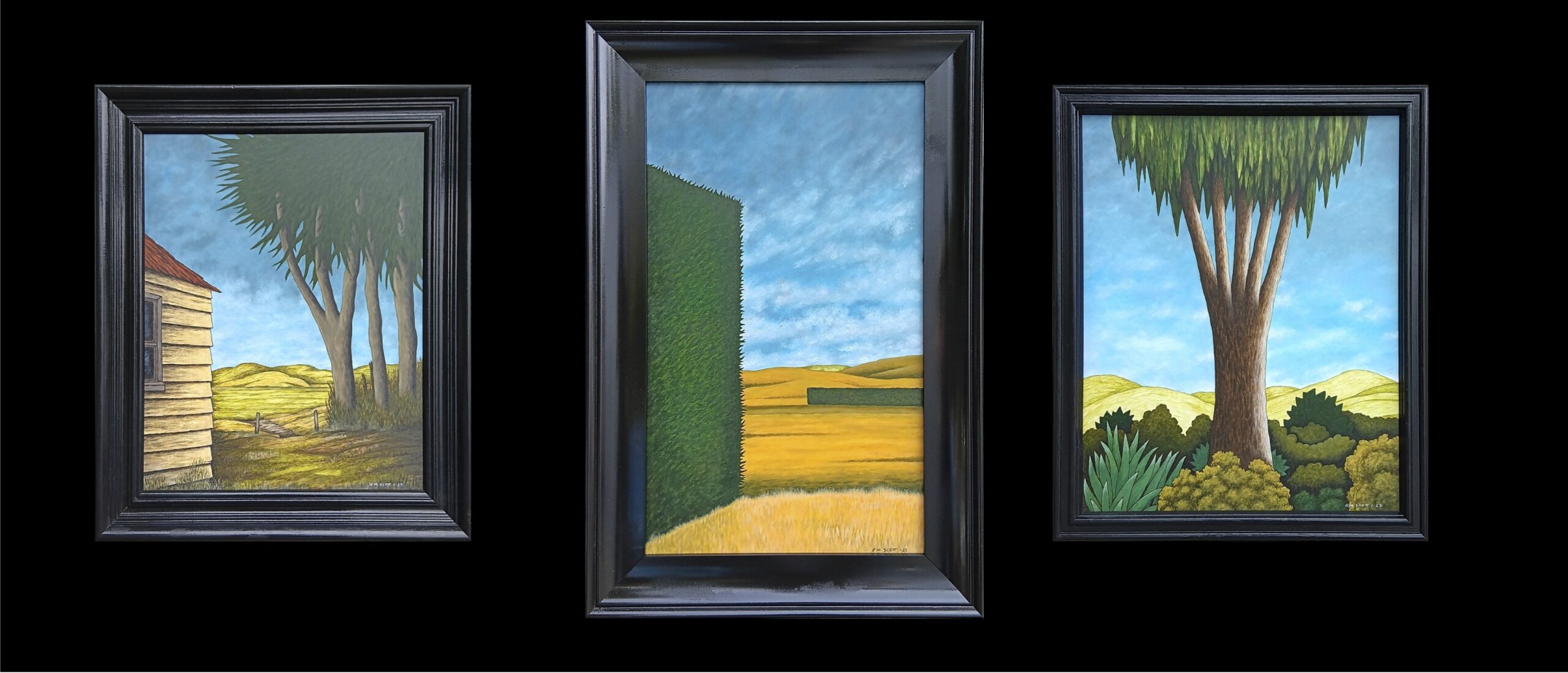Robert Scott
Robert Scott, in the words of Alistair Fox, “is perhaps best known as one of the musicians who was involved in the birth of ‘Dunedin Sound’ in the 1980s'”. Over the past few years, he has developed a growing reputation as a visual artist and gallerist. His recent exhibitions include “Recover the Land” at the Forrester Gallery, Oamaru, 13 April–30 June 2025. He is a long-time resident of Port Chalmers, where he and his partner Dallas Henley run Pea Sea Art Gallery.

* * * * *
Robert Scott: The Stand
14 February – 1 April 2025
Underneath their surface simplicity, Scott’s paintings embody a latent complexity that relates to the artist’s own experience. He recounts how his father “was obsessed with ghost stories and horror writing”, and would read him and his brother ghost tales every Sunday night in front of the fire for an hour before bed. “That built up a fervent imagination of slightly spooky stuff,” Scott says, and he admits that to this day, he feels the impact of that exposure to the idea that the external world is replete with threats and dangers. This sense of threat lies behind the inclusion of a run-down house in some of his paintings; its presence generates a certain “creepiness”, suggesting the existence of a further story that is not being elaborated in the imagery of the rest of the painting. As he puts it, “old buildings have a slightly spooky, slightly gothic feeling. The building is adding to the story, the unknown … what could be in that building?” Not coincidentally, he titled his first solo album (released in 2000 on Flying Nun Records) The Creeping Unknown, inspired by the poster of a 1955 horror film of the same name.
Negative connotations like this, on the other hand, are countered by Scott’s deep love of nature:
I use the landforms in nature as a springboard to go somewhere else. Somewhere in my imagination that I see quite often … images and pictures in my head and a feeling of being at one with nature and enveloped in the landforms. Feelings I had as a kid roaming about outside. We had a nice big hill, called Saddle Hill, a few hundred metres above where we lived, and me and my brother and friends would go up and spend time on that hill. Our scout den was up there as well, and we’d catch frogs in the pond there.
Painting these landscapes, he admits, is comforting: “When I think about it, it’s almost about trying to recapture childhood. It very much comes from my unconscious. It captures the feeling of a safe time, because I find that in these times, things are quite scary to me.” The trees in Scott’s paintings, together with the hills and coastal scenes, thus recall happy times spent as a child in East Taieri and holidays with his family in the Catlins.
From Alistair Fox, ” Deceptive Surfaces: Robert Scott’s The Stand,” in Robert Scott: The Stand, ed. Alistair Fox and Hilary Radner, Occasional Essays Series, February 2025: 1-5.
Paintings reproduced above:
Creek Country, 2025, acrylic on plywood, 515mm w x 625mm h, framed
Shelter Belts, 2025, acrylic on plywood, 472mm w x 706mm h framed
Last One in the Stand, 2025, acrylic on plywood, 468mm w x 568mm h, framed
For a catalogue of works available, click here.
For the issue of the RDS Gallery Occasional Essays Series published in conjunction with the exhibition Robert Scott: The Stand, click here.